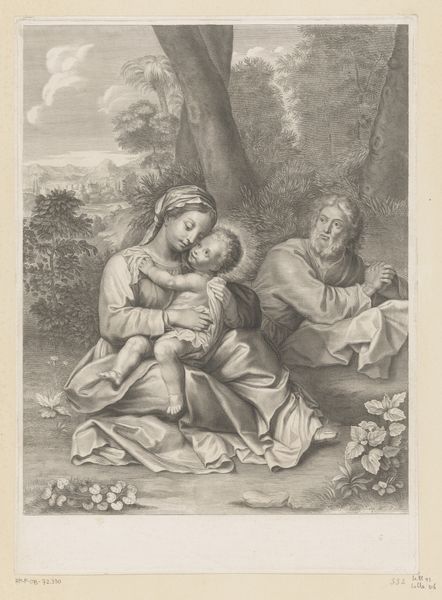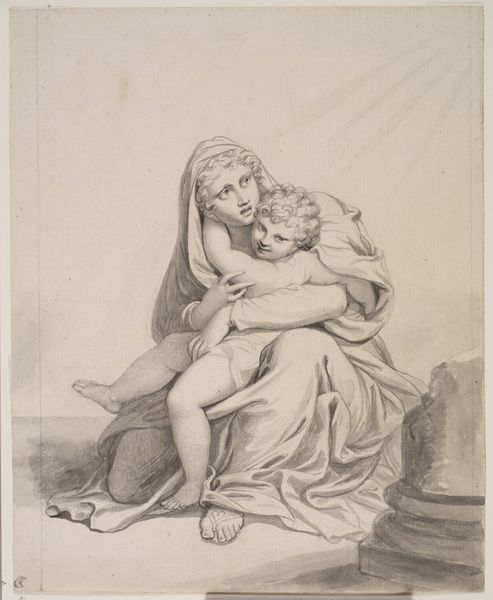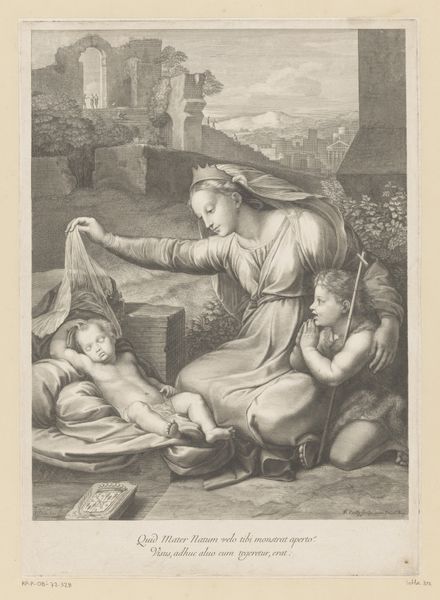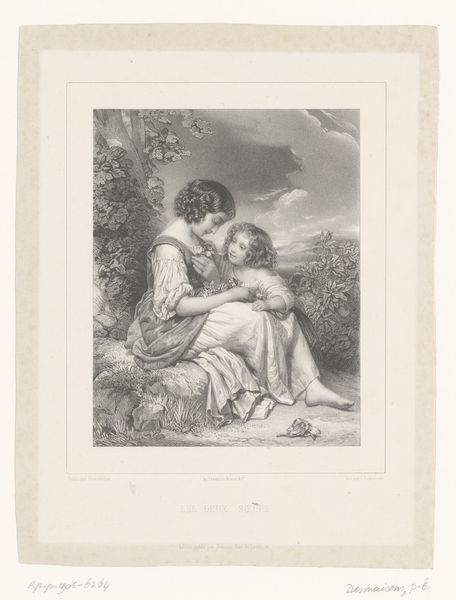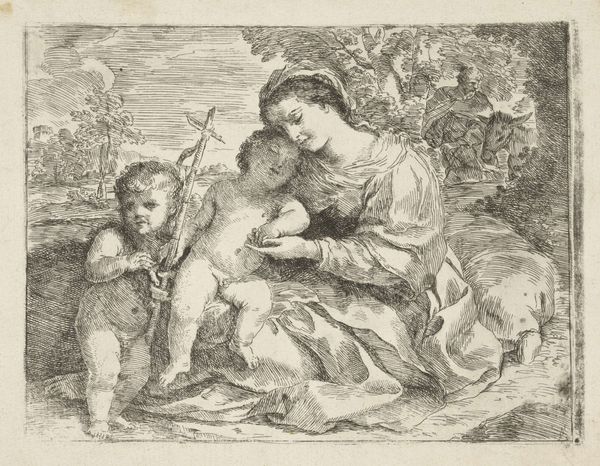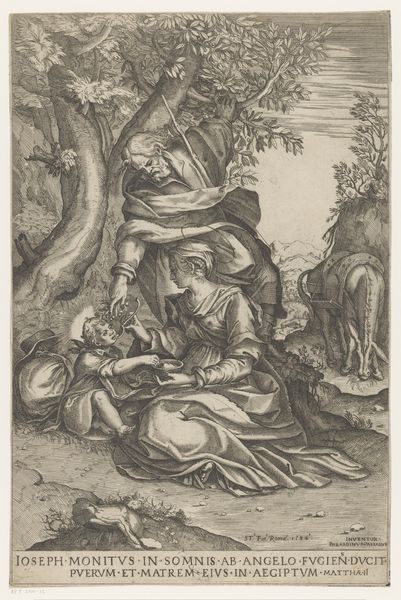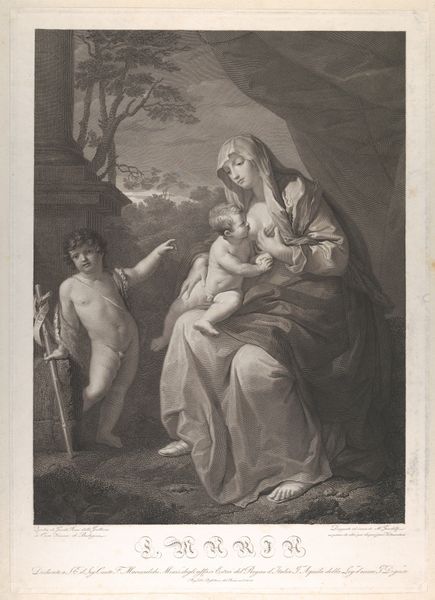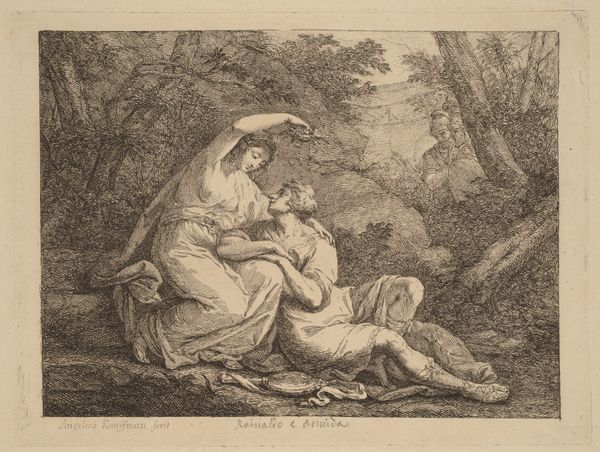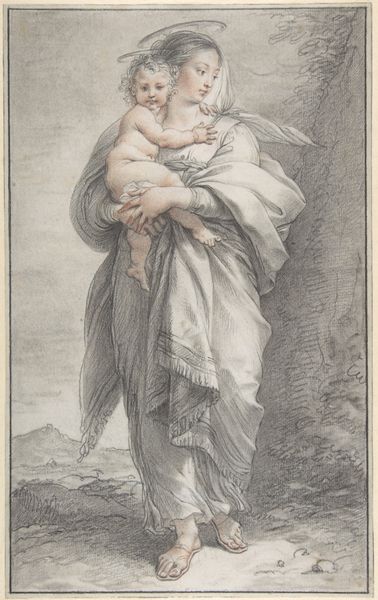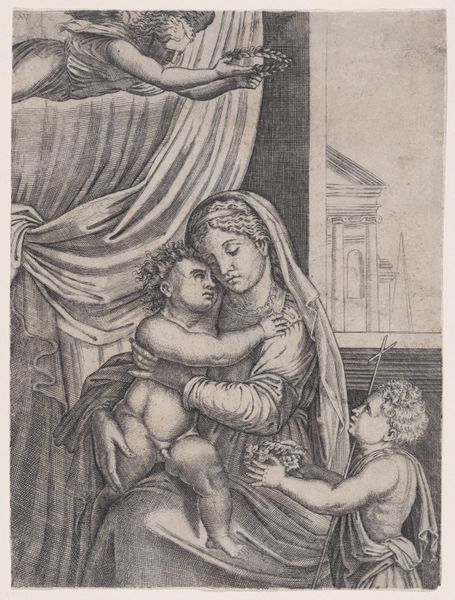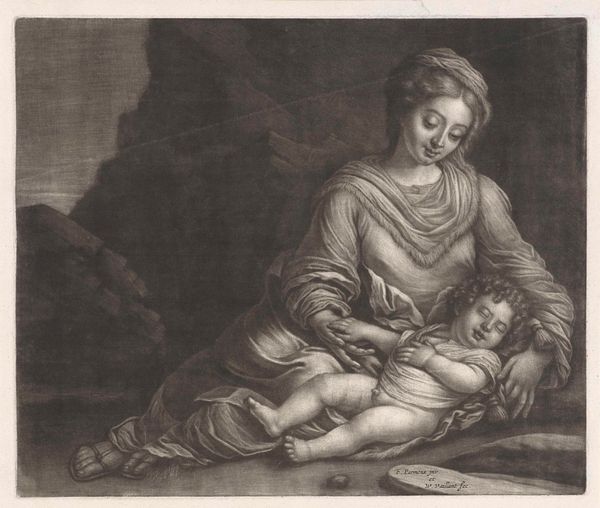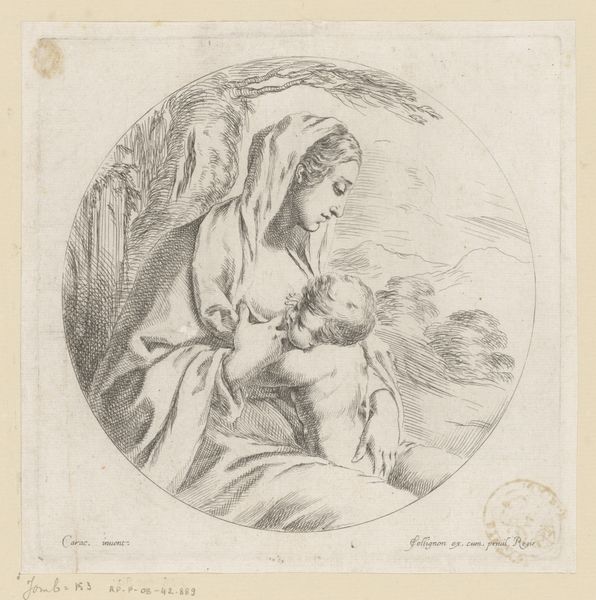
print, etching
#
portrait
#
baroque
# print
#
etching
#
landscape
#
figuration
#
portrait reference
#
portrait drawing
#
history-painting
Dimensions: height 547 mm, width 404 mm
Copyright: Rijks Museum: Open Domain
Curator: This is an etching entitled "Maria met kind in een landschap," which translates to "Mary with child in a landscape," dating from around 1690 to 1730, by Simon de la Vallée. Editor: It's immediately striking, the almost dreamlike quality. There's such a tenderness in Mary's gaze as she cradles the child. It feels less like a formal religious piece and more like an intimate, maternal moment captured in the stillness of the woods. Curator: And the setting is interesting, isn't it? The baroque period often saw a merging of the religious and the everyday, relocating sacred scenes to relatable contexts. Consider, too, the evolving role of art patronage at the time. How do you feel that impacts the overall symbolism and emotional effect? Editor: Absolutely, moving the Madonna and Child out of a palatial or celestial setting and into a simple forest scene amplifies the accessible humanity. The landscape feels allegorical to safety, nurturing—a place of refuge. I see an evocation of the "hortus conclusus" imagery—a symbol of Mary's purity and virginity, framed as a safe garden. Curator: And that sense of refuge surely resonates given the social unrest and religious conflicts occurring across Europe at that time, placing additional emphasis on the roles of mother and child. Looking at it through a public lens, this domestic portrayal challenges perceptions. Editor: I find it particularly interesting that her feet are bare. In this scene it draws all sorts of ideas about grounding, closeness to earth, vulnerability... stripping her of earthly trappings. It pulls us back to fundamental symbolism: Mother Earth, the purity of maternal love, protection, which are all visually powerful and affecting even for a modern viewer. Curator: I agree; by stripping the image back to focus on that core message of compassion and protection, it taps into an essential human story. It moves the Holy figures into a shared cultural landscape and brings these figures down to earth. Editor: Yes, it transforms a powerful symbol of protection into a very gentle, intimate human scene that can endure through many different cultural conditions.
Comments
No comments
Be the first to comment and join the conversation on the ultimate creative platform.
